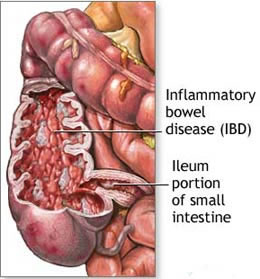
FACTS & FIGURES1
Crohn's Disease
Crohn's
affects approximately 60,000 people in the UK, that’s about 1 in 1000.
Between 3,000 and 6,000 new cases are diagnosed each year. Research
shows that the number of people with Crohn’s Disease has been rising
steadily, particularly among young people.
Crohn's
can affect anywhere from the mouth to the anus but most commonly
affects the small intestine and/or colon. It causes inflammation, deep
ulcers and scarring to the wall of the intestine and often occurs in
patches
The main symptoms are pain in the abdomen, urgent
diarrhoea, general tiredness and loss of weight. Crohn’s is sometimes
associated with other inflammatory conditions affecting the joints, skin
and eyes
Ulcerative Colitis
Affects up to 120,000 people in the UK, that’s about 1 in 500. Between 6,000 and 12,000 new cases are diagnosed each year.
This
affects the rectum and sometimes the colon (large intestine).
Inflammation and many tiny ulcers develop on the inside lining of the
colon resulting in urgent and bloody diarrhoea, pain and continual
tiredness. The condition varies as to how much of the colon is affected.
In
addition, UC can cause inflammation in the eyes, skin and joints. If
the inflammation is only in the rectum it is known as proctitis.
 2
2
For both illnesses
Together,
Ulcerative Colitis (UC) and Crohn’s Disease affect about 1 person in
every 400 in the United Kingdom population. UC and Crohn’s Disease are
chronic (ongoing) conditions, which are not infectious. The most common
age for diagnosis is between 10 and 40 (although diagnosis can occur at
any age). In both UC and Crohn’s there is a higher chance of developing
either illness if you have a close relative who has the condition. In
10-15% of cases, UC and Crohn’s may be difficult to distinguish. Men and
women suffer equally.
The severity of the symptoms fluctuates
unpredictably over time. Patients are likely to experience flare-ups in
between intervals of remission or reduced symptoms. The cause or causes
have not yet been identified in either illness. Both genetic factors and
environmental triggers are likely to be involved.
1. Taken from the NACC website. 2. Image from Crohn's Zone website.